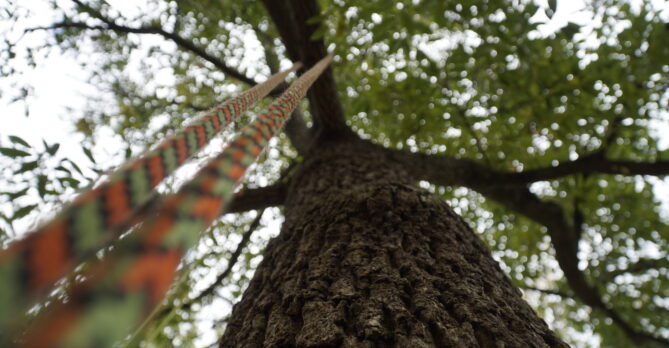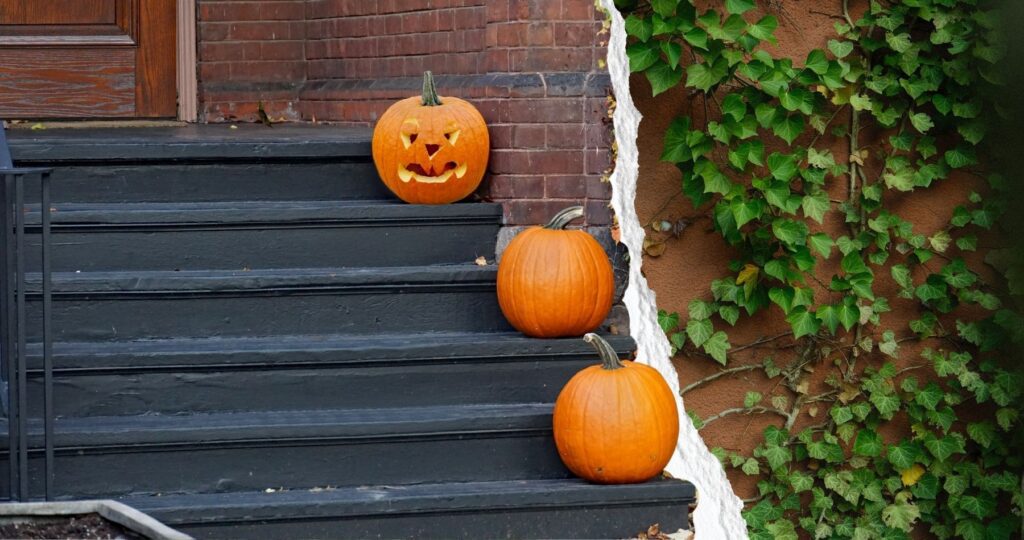
With colors changing, skeletons dangling, and pumpkins lining doorsteps, the streets of DC have fully embraced all things spooky. But the next time you’re admiring someone’s Halloween decor, you may notice some other frights hiding among the cobwebs: the invasive plants that creep through our gardens year-round.
Much like a ghost, these invasive species haunt our dreams and keep coming back (no matter how many exorcisms you’ve tried).
Here’s what’s really lurking in your yard this Halloween.
Porcelain Berry (Ampelopsis glandulosa)
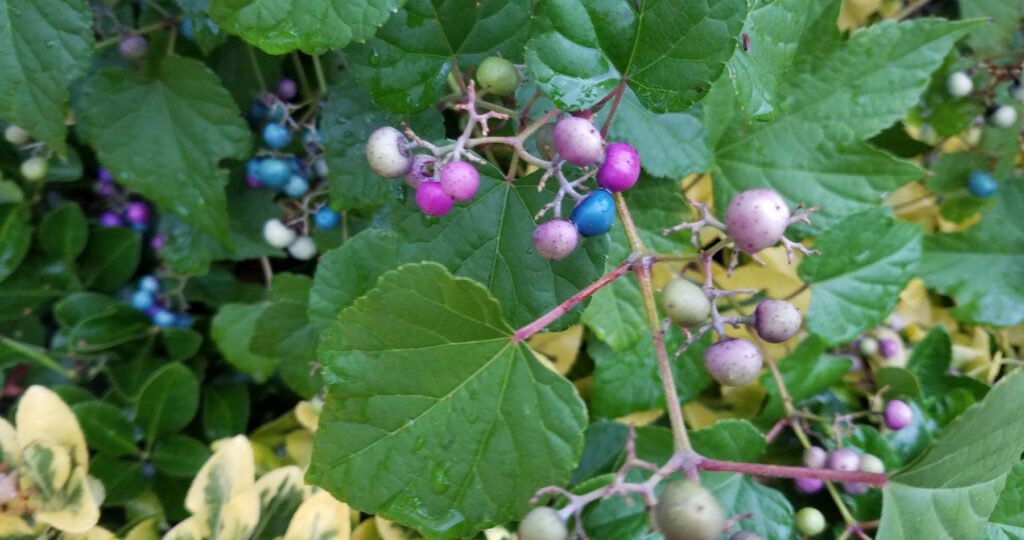
While its berries may look inviting, porcelain berry does not play nice with others and is known to crowd out native vegetation, kill trees, and form dense, tangled webs that block sunlight from native plants. Porcelain berry is identified by its heart-shaped leaves with rough edges. In summer, it sprouts white flowers that turn into berries in September and October, ranging in colors of white, yellow, purple, and blue.
It’s worth noting that porcelain berry closely resembles some native, wild grape vines. One big distinction: The bark of native grape vines shreds or peels while the porcelain berry’s does not. Additionally, the inside of a native grape’s stem is brown while the porcelain berry’s is white.
English Ivy (Hedera helix)
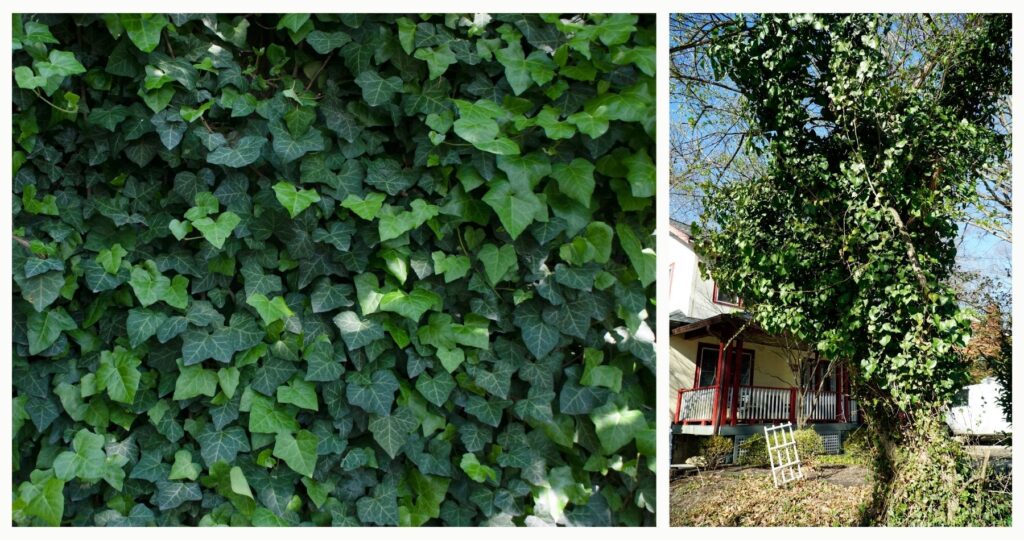
Easily spotted by its dark green, alternating leaves with 3-5 lobes, English ivy can be found crawling on front yards and homes all around DC. The vine is notorious for causing significant harm to trees, including bark damage, preventing sunlight from reaching tree leaves, and weighing its branches down.
English ivy’s leaves are waxy in texture, and older plants produce greenish-white flowers and blue/black berries, which are dispersed by birds and other animals which is one reason it’s so invasive. Through our partnership with CCAN, we host invasive vine removals every month to save our community’s trees from this persistent plant.
Bush Honeysuckles (Lonicera spp.)
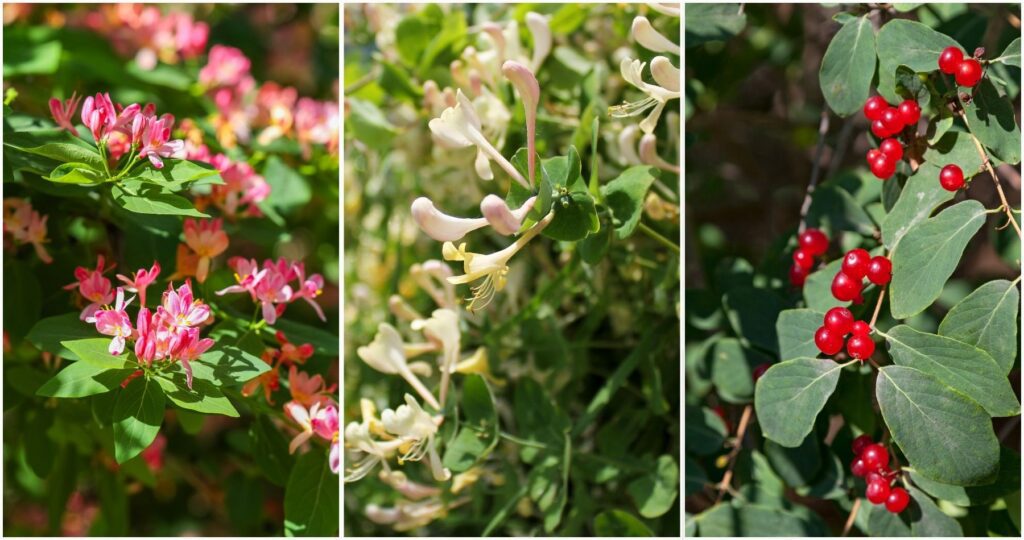
While North America is home to some native varieties of bush honeysuckle, the prevalence of non-native varieties such as Amur (Lonicera maackii), Morrow’s (Lonicera morrowii), and Tatrian (Lonicera tatarica) overtake their native counterparts by blooming earlier and faster, giving them a head start on out-competing for resources.
Native species of honeysuckle can be identified by their location and appearance: They prefer dry, rocky soil and feature short bushes with only yellow flowers. Non-native bush honeysuckle prefers moist soil with berries ranging in color from red to yellow. However, the most obvious difference is height: Native honeysuckle will stay under three feet tall, while non-native honeysuckle grows up to 10 feet or more.
Bush honeysuckles are perennial deciduous shrubs that harm trees and native plants within the DMV by creating dense, tangled thickets that block resources, such as sunlight, soil nutrients, and soil moisture, from native plants. Over time, bush honeysuckles cause long-term deterioration of forests. It spreads quickly through the dissemination of its berries by local wildlife.
Bradford or Callery Pear Tree (Pyrus calleryana)
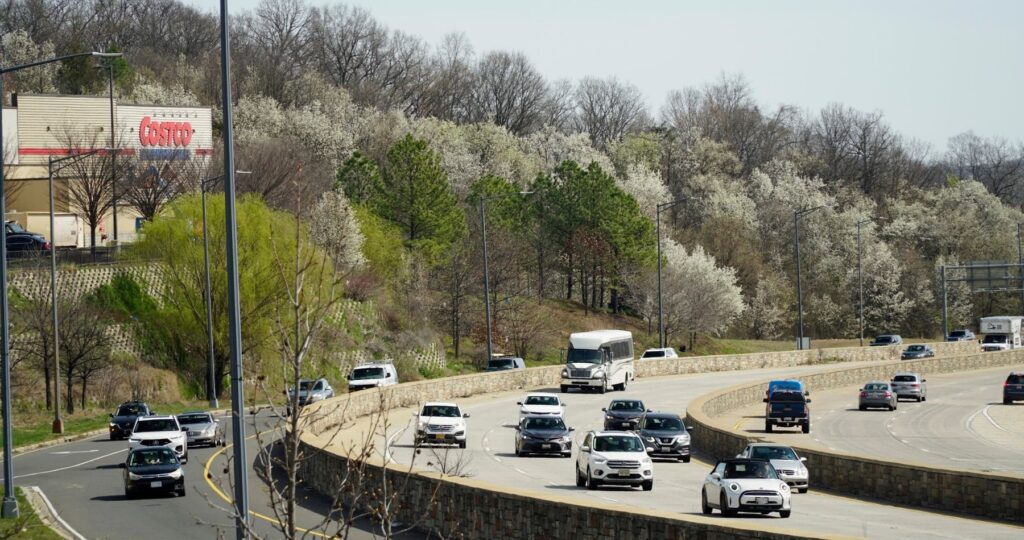
The Bradford pear is a relatively recent addition to the tree canopy: It was first introduced in the 1960s by the U.S. Department of Agriculture as an early-blooming landscape tree. Fast forward to today, the Bradford pear’s rapid growth and prolific reproduction have led its offspring to infiltrate natural habitats, outcompete native species, and wreak havoc on our native greenery.
The invasive isn’t pleasant company: Its wood splits easily, and its puffy, white flowers are fragrant – but not in a good way.
You can spot groves of Bradford pear along freeways or lining city streets, especially in early spring when it blooms.
Japanese Wisteria (Wisteria floribunda)
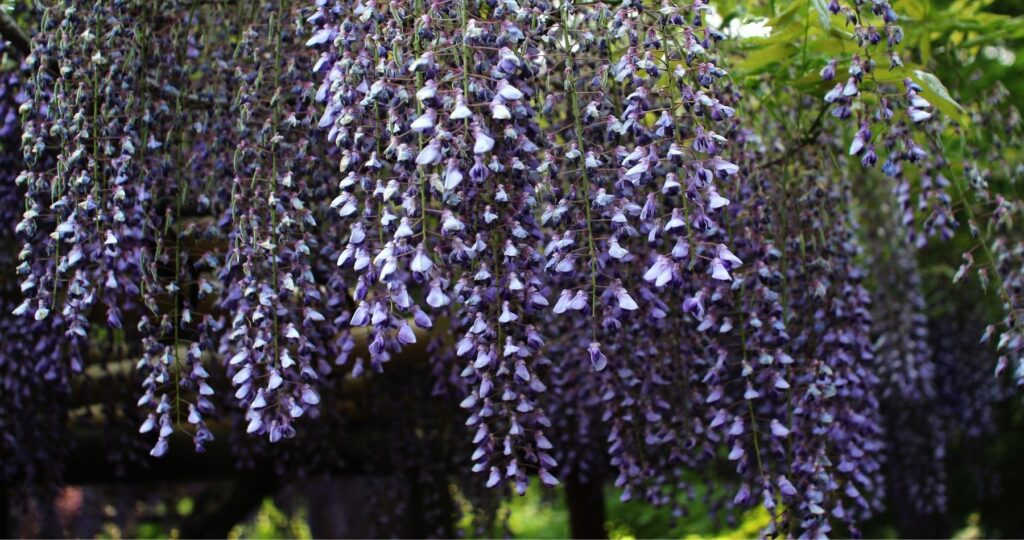
Japanese and Chinese wisteria are perennial vines planted in yards and gardens for their beautiful flowers. However, plants don’t abide by property lines. When these non-native varieties establish in natural areas, they displace native vegetation and kill mature trees by depriving them of sunlight and resources. If you love flowers, you’re in luck: You can plant American Wisteria instead.
Tree of Heaven (Ailanthus altissima)
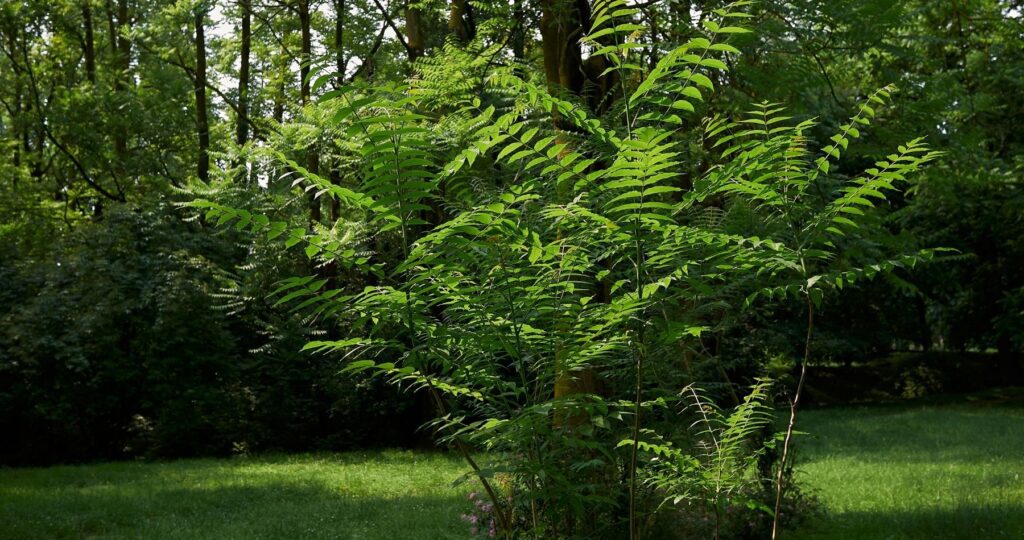
We talk about this one a lot, but it’s worth another mention. Despite its name, this tree is not as heavenly as it appears. We’ll keep this brief. The Tree of Heaven recently took the local spotlight as a preferred host for the spotted lantern fly. This tree makes up a significant portion of DC’s tree canopy, and you’ll find it pops up everywhere, from forest patches to sidewalk cracks. For more about the tree of heaven, check out our recent article on the invasive.
Breaking the Curse: Plant Natives Instead
So, what can you do to tackle these invasive plants?
Volunteer with us at an upcoming invasive vine removal event! Through a partnership with the Chesapeake Climate Action Network, we host invasive removals every month on both public and private property in DC and Prince George’s County.
You can also take it one step further and let us transform your yard into a beautiful native plant garden that supports pollinators and local wildlife.
Whether you’re looking to replace that invasive wisteria with a native alternative or create a pollinator paradise from scratch, we’re here to help. Schedule a consultation with us here – any profit generated from our garden installations is reinvested directly back into re-treeing DC and supporting our community programs.


